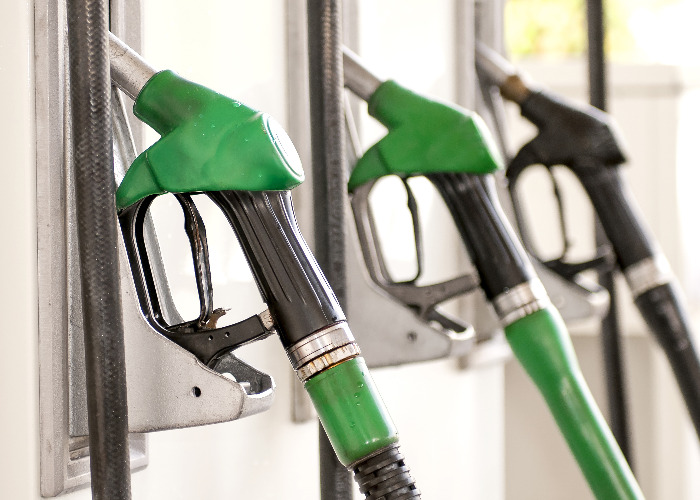RAC Fuel Watch: petrol and diesel prices jump 4p in March

First jump in prices since July 2015.
The cost of filling up at petrol stations across Britain went up substantially in March, according to new data from RAC Fuel Watch.
At the beginning of the month, the average price of a litre of petrol was 101.91p but by the end of March it had climbed to 105.26p, a rise of 3.4p.
The RAC estimates the shift added £1.84 to the cost of filling up a typical 55-litre car taking the total bill to £57.89.
The wholesale price of petrol over the same period increased 6p a litre from 97.13p to 103.19p, which could mean pump prices could go up even further over the next few weeks.
RAC Fuel Watch data for March also shows diesel forecourt prices increased by 3.7p a litre from 101.56p to 105.26p, adding £2 to the cost of filling up a typical tank.
Worryingly, this was despite the fact that wholesale prices only rose by 1.5p a litre. The RAC says this indicates that retailers are once again using lower diesel wholesale costs to subsidise the price of petrol, or using it to bump up their profits.
Why have prices gone up?
Motorists have enjoyed eight months of tumbling prices at the pumps, but that trend has taken a turn as the cost of oil briefly hit $40 a barrel for the first time since last December.
The RAC says the cost of a barrel of oil moved up 8% from $35.91 on 3 March to $38.70 at the end of the month, but for four days in the middle of the month the cost went over the $40 mark.
This has caused the first upward shift in petrol prices since July 2015.
RAC spokesman Simon Williams said: "The good times for motorists enjoying lower fuel prices had to come to an end at some point, but unfortunately it’s happened with a bit more of a bump than motorists were probably expecting.”
Are more price rises on the way?
The RAC says drivers could face more price rises following an oil production meeting between producers scheduled for mid-April.
The world is producing more oil than it needs, which means wholesale prices are being kept low. The meeting between OPEC and non-OPEC countries – responsible for nearly 75% of the world’s oil production - will discuss limiting output on 17 April to help boostprices.
The RAC say this is bad news for motorists as it will inevitably feed into more price rises on the forecourt.
However, Williams says prices shouldn’t return to the eye-watering level they were at in April 2012 when the average price of petrol was 142p and diesel was close to 150p per litre as producers will want to keep prices competitive to guard against competition from fracking.
How to save on fuel
It pays to compare the cost of petrol in your area to find the best deal and websites like PetrolPrices.com can help you do this.
You should also make sure you are making the most of supermarket promotions and petrol station loyalty cards that can help you get money off at the pump.
Paying for your fuel with a credit card can also help you save money. The AA Fuel Save Credit Card for example offers 4% cashback on fuel spending, providing you spend £500 on the card.
Alternatively, there’s the Santander 123 Credit Card, which pays 3% cashback on travel spends, including fuel. It also pays 2% cashback on department store spending and 1% cashback on supermarket purchases. The card comes with a £3 monthly fee.
Read: How to find the cheapest petrol on diesel prices for more tips.
Compare car insurance quotes with loveMONEY
More on motoring:
How to get the best part-exchange car deal
Car finance options: credit, loans, HP and leasing
Pothole damage: how to claim compensation to cover cost of repairs to your tyres, wheels, suspension
Comments
Be the first to comment
Do you want to comment on this article? You need to be signed in for this feature